16 books
-
1. F. Scott Fitzgerald: Complete Works

Francis Scott Fitzgerald (1896–1940) was an American novelist, essayist, screenwriter, and short-story writer. During his lifetime, he published four novels, four collections of short stories, and 164 short stories. Although he temporarily achieved popular success and fortune in the 1920s, Fitzgerald only received wide critical and popular acclaim after his death. He is widely regarded as one of the greatest American writers of the 20th century. Fitzgerald was born in Minnesota, but was primarily raised in New York. He attended Princeton University, but due to a failed relationship and a preoccupation with writing, he dropped out in 1917 to join the army. In the 1920s, Fitzgerald frequented Europe, where he was influenced by the modernist writers and artists of the "Lost Generation" expatriate community, particularly Ernest Hemingway. His second novel, The Beautiful and Damned (1922), propelled him into the New York City elite. To maintain his lifestyle during this time, he also wrote several stories for magazines. His third novel, The Great Gatsby (1925), was inspired by his rise to fame and relationship with his wife Zelda. Although it received mixed reviews, The Great Gatsby is now widely praised, with some even labeling it the "Great American Novel". While Zelda was placed at a mental institute for her schizophrenia, Fitzgerald completed his final novel, Tender Is the Night (1934). Faced with financial difficulties due to the declining popularity of his works, Fitzgerald turned to Hollywood, writing and revising screenplays. After a long struggle with alcoholism, he died in 1940, at the age of 44. A fifth, unfinished novel.
-
2. The Great Gatsby
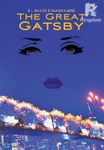
THE GREAT GATSBY is a 1925 novel written by American author F. Scott Fitzgerald that follows a cast of characters living in the fictional town of West Egg on prosperous Long Island in the summer of 1922. The story primarily concerns the young and mysterious millionaire Jay Gatsby and his quixotic passion and obsession for the beautiful former debutante Daisy Buchanan. Considered to be Fitzgerald"s magnum opus, The Great Gatsby explores themes of decadence, idealism, resistance to change, social upheaval, and excess, creating a portrait of the Jazz Age or the Roaring Twenties that has been described as a cautionary tale regarding the American Dream. Fitzgerald-inspired by the parties he had attended while visiting Long Island"s north shore-began planning the novel in 1923, desiring to produce, in his words, "something new-something extraordinary and beautiful and simple and intricately patterned." Progress was slow, with Fitzgerald completing his first draft following a move to the French Riviera in 1924. His editor, Maxwell Perkins, felt the book was vague and persuaded the author to revise over the next winter. Fitzgerald was repeatedly ambivalent about the book"s title and he considered a variety of alternatives, including titles that referenced the Roman character Trimalchio; the title he was last documented to have desired was Under the Red, White, and Blue. In its first year, the book sold only 20,000 copies. Fitzgerald died in 1940, believing himself to be a failure and his work forgotten. However, the novel experienced a revival during World War II, and became a part of American high school curricula and numerous stage and film adaptations in the following decades. Today, The Great Gatsby is widely considered to be a literary classic and a contender for the title "Great American Novel". In 1998, the Modern Library editorial board voted it the 20th century"s best American novel and second best English-language novel of the same time period.
-
3. The Great Gatsby
(1925) July 9th, 2002: - We have just been informed that this book is still in copyright and therefore we have had to remove the text from the site. In place of the text we have added a chapter by chapter summary. Please note the search feature searches through this summary, not the text. -- This novel shows the basic instinct of human beings to be admired as someone special even if this instinct leads, like moths attracted by the fire, towards burned wings.--Submitted by Mahawa Cheikh Gueye The hollow pursuit of wealth and social status results in tragedy in F. Scott Fitzgerald's The Great Gatsby. Each character has their own way of showing off their wealth and status. Whether it's by the type of car you drive or the location of your house or even through marriage, it's all shown in this novel.--Submitted by Anonymous The Great Gatsby is set in the jazz age, the 1920's. It tells the fictional story of an enigmatic and lonely millionaire named Jay Gatsby, who has been in love with the same woman for years and tries to win her back. The narrator is Nick, who lives across the lawn from Gatsby and becomes friends with him. This book written by F. Scott Fitzgerald, one of the greatest authors of all time shows that no matter how rich we are, it cannot buy us love.--Submitted by Anna This novel is beautiful in every way. It is filled with a haunting sadness, that I have never been able to forget. The prose is beautiful -- glowing like Daisy's green light across the water. The story itself is beautifully tragic -- a poor man falls in love with a beautiful, rich woman (or what she represents) and it brings disaster. But this book is so much more than that. What F. Scott Fitzgerald shows the reader about this society we, ourselves, have created is larger than any story a person could think up. Fitzgerald creates a portrait of the hollowness, carelessness, and ugliness in American society that moved my old English teacher to tears in front of the whole class a few years ago, and brings a lump to my throat even now, as I think about it. If someone asked me what exactly The Great Gatsby "means," I couldn't tell them. I don't think anyone will ever be able to understand it enough to put it in words that will have meaning to everyone, but I think anyone who reads this book WILL have an understanding of it that they can feel in the gut. Such is the way with all great literature.--Submitted by Anonymous
-
4. Il grande Gatsby

SOLIDARIETA" DIGITALE : tutto il nostro catalogo in promozione! NUOVA EDIZIONE! Il Grande Gatsby (1925) è il terzo romanzo di Francis Scott Fitzgerald ed è considerato il suo capolavoro. È ambientato negli Stati Uniti durante il primo dopoguerra ed è il drammatico racconto di una storia d’amore. Jay Gatsby, diventato ricco e potente tramite attività illecite, nasconde nell’animo una grande solitudine che non riesce a cancellare nonostante una vita di feste, musica, belle automobili e giovani donne. Non ha mai dimenticato, infatti, il suo più grande amore, Daisy. Il narratore è Nick Carraway che si trasferisce a Long Island proprio accanto alla splendida villa del misterioso Gatsby e ne ricostruisce la parabola esistenziale passo dopo passo. Fra i due si crea un rapporto di amicizia perché il ricco vicino scopre che Nick è il cugino di Daisy, che ha sposato Tom Buchanan, marito infedele e rozzo. Le vite sfavillanti dei personaggi e le loro forti passioni porteranno a un drammatico finale, che lascerà profonde ferite nell’animo di chiunque abbia incrociato le loro strade polverose.
-
5. This Side of Paradise

Amory Blaine inherited from his mother every trait, except the stray inexpressible few, that made him worth while. His father, an ineffectual, inarticulate man with a taste for Byron and a habit of drowsing over the Encyclopedia Britannica, grew wealthy at thirty through the death of two elder brothers, successful Chicago brokers, and in the first flush of feeling that the world was his, went to Bar Harbor and met Beatrice O"Hara. In consequence, Stephen Blaine handed down to posterity his height of just under six feet and his tendency to waver at crucial moments, these two abstractions appearing in his son Amory. For many years he hovered in the background of his family"s life, an unassertive figure with a face half-obliterated by lifeless, silky hair, continually occupied in “taking care” of his wife, continually harassed by the idea that he didn"t and couldn"t understand her. But Beatrice Blaine! There was a woman! Early pictures taken on her father"s estate at Lake Geneva, Wisconsin, or in Rome at the Sacred Heart Convent—an educational extravagance that in her youth was only for the daughters of the exceptionally wealthy—showed the exquisite delicacy of her features, the consummate art and simplicity of her clothes. A brilliant education she had—her youth passed in renaissance glory, she was versed in the latest gossip of the Older Roman Families; known by name as a fabulously wealthy American girl to Cardinal Vitori and Queen Margherita and more subtle celebrities that one must have had some culture even to have heard of. She learned in England to prefer whiskey and soda to wine, and her small talk was broadened in two senses during a winter in Vienna. All in all Beatrice O"Hara absorbed the sort of education that will be quite impossible ever again; a tutelage measured by the number of things and people one could be contemptuous of and charming about; a culture rich in all arts and traditions, barren of all ideas, in the last of those days when the great gardener clipped the inferior roses to produce one perfect bud. In her less important moments she returned to America, met Stephen Blaine and married him—this almost entirely because she was a little bit weary, a little bit sad. Her only child was carried through a tiresome season and brought into the world on a spring day in ninety-six.
-
6. The Great Gatsby
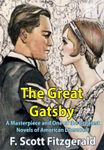
The Great Gatsby by F. Scott Fitzgerald. His third book, stands as the supreme achievement of his career. This exemplary novel of the Jazz Age has been acclaimed by generations of readers. The Great Gatsby, F. Scott Fitzgerald’s third book, stands as the supreme achievement of his career. This exemplary novel of the Jazz Age has been acclaimed by generations of readers. The story of the fabulously wealthy Jay Gatsby and his love for the beautiful Daisy Buchanan, of lavish parties on Long Island at a time when The New York Times noted “gin was the national drink and s*x the national obsession,” it is an exquisitely crafted tale of America in the 1920s. The Great Gatsby is one of the great classics of twentieth-century literature.
-
7. This Side of Paradise
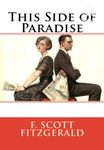
First published in 1920, F. Scott Fitzgerald’s debut novel This Side of Paradise was a sizzling sensation that put the young American author on the map. This heart-rending romance is about a brilliant Princeton University student full of potential whose life is thrown into turmoil by desire. While in school he goes back to Minneapolis where he re-encounters a young lady whom he met as a little boy, and starts a romantic relationship. The book"s initial printing of 3,000 copies sold out in three days. Virtually a record of the ‘Lost Generation’ in its college days, This Side of Paradise is a devastating treatment of Fitzgerald’s characteristic theme of true love blighted by money and lust.
-
8. F. Scott Fitzgerald Four Pack
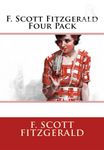
"If I wanted anything, I"d take it... I can"t be bothered resisting things I want." ~ The Beautiful and Damned. Fans of The Great Gatsby author are in for a treat! Included in this bundle: This Side of Paradise, The Beautiful and Damned, The Diamond as Big as the Ritz and The Curious Case of Benjamin Button. THIS SIDE OF PARADISE First published in 1920, F. Scott Fitzgerald’s debut novel was a sizzling sensation that put the young American author on the map. Its initial printing of 3,000 copies sold out in three days. Virtually a record of the ‘Lost Generation’ in its college days, the novel explores Fitzgerald’s characteristic theme of true love blighted by money lust and is remarkable for its honest and detailed descriptions of the early Jazz Age. THE BEAUTIFUL AND THE DAMNED First published in 1922, F. Scott Fitzgerald"s second novel portrays the Eastern elite during the Jazz Age, exploring New York Café Society. The story is believed to be largely based on Fitzgerald"s stormy relationship with Zelda Fitzgerald. This is the tale of young couple Anthony and Gloria Patch living out their days to the hilt in New York City as they await the death of Anthony"s grandfather, Adam Patch from whom they expect to inherit his massive fortune. They drink and eat in the classiest restaurants and hotels, rent the most expensive apartments, travel out to the West in the spring time driving plush cars, wearing top-of-the-line clothing and just generally living it up high on the hog, as they wait. But as time goes on their lust for life and their similarities threaten to destroy their innocence and their relationship. THE DIAMOND AS BIG AS THE RITZ First published in the June 1922 issue of The Smart Set magazine, The Diamond as Big as The Ritz is one of F. Scott Fitzgerald’s under-rated masterpieces. The story was initially rejected by publishers because of its not-so-subtle satirical messages about American capitalism. THE CURIOUS CASE OF BENJAMIN BUTTON The classic short story was first published in Colliers Magazine on May 27, 1922. It was subsequently anthologized in Fitzgerald"s book Tales of the Jazz Age. This is the original version of the story used for the 2008 film starring Brad Pitt.
-
9. This Side of Paradise
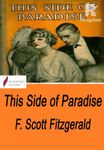
This Side of Paradise is the debut novel by F. Scott Fitzgerald, published in 1920. The book examines the lives and morality of post–World War I youth. Its protagonist Amory Blaine is an attractive student at Princeton University who dabbles in literature. The novel explores the theme of love warped by greed and status seeking, and takes its title from a line of Rupert Brooke"s poem Tiare Tahiti. The novel famously helped F. Scott Fitzgerald gain Zelda Sayre"s hand in marriage; its publication was her condition of acceptance. Francis Scott Key Fitzgerald (September 24, 1896 – December 21, 1940) was an American essayist, novelist, screenwriter, and short-story writer, although he was best known for his novels depicting the flamboyance and excess of the Jazz Age—a term which he coined. Although he temporarily achieved popular success and fortune, Fitzgerald did not receive much critical acclaim until after his death. He published four novels, four collections of short stories, as well as 164 short stories in magazines during his lifetime. Fitzgerald is widely regarded as one of the greatest American writers of the 20th century.
-
10. The Beautiful and Damned
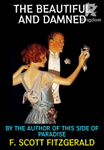
F. Scott Fitzgerald’s second novel, which brilliantly satirizes a doomed and glamorous marriage, anticipated the master stroke—The Great Gatsby—that would follow, and marks a key moment in the writer’s career. Would-be Jazz Age aristocrats Anthony and Gloria Patch embody the corrupt high society of 1920s New York: they are beautiful, shallow, pleasure-seeking, and vain. As presumptive heirs to a large fortune, they begin their married life by living well beyond their means. Their days are marked by endless drinking, dancing, luxury, and play. But when the expected inheritance is withheld, their lives become consumed with the pursuit of wealth, and their alliance begins to fall apart. Inspired in part by Fitzgerald’s own tumultuous union with his wife Zelda, hauntingly rendered and keenly observed, these characters evoke a vivid portrait of a lost world: a city steeped in vice, a society without direction, and the rootless and decadent generation that inhabited it.
-
11. Gatsby le Magnifique
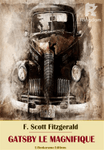
Paru en 1925, "Gatsby le Magnifique" est le chef-d'oeuvre de l'écrivain américain F. Scott Fitzgerald.Au début des années 1920, dans une débauche de luxe, d'alcool et d'argent, un mystérieux personnage s'installe à Long Island dans un domaine incroyable d'extravagance. Qui est ce charmant et légendaire Gatsby, incarnation du pouvoir et de la réussite, dont les fêtes attirent toute la société locale? Les rumeurs les plus folles circulent. Un espion? Un gentleman anglais? Un héros de guerre? Un mythomane? Une vérité plus profonde se cache derrière l'orgueil et la magnificence de Gatsby, celle d'un ancien adolescent pauvre et d'un amant trahi qui ressemble beaucoup à Fitzgerald lui-même. Le vingtième siècle ne fait que commencer mais la fête semble déjà finie... "Gatsby le Magnifique" figure à la deuxième place dans la liste des cent meilleurs romans de langue anglaise du XXe siècle établie par la Modern Library en 1998.
-
12. This Side of Paradise
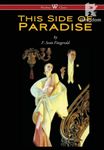
"It bears the impress, it seems to me, of genius. It is the only adequate study that we have had of the contemporary American in adolescence and young manhood." -Burton Rascoe of the Chicago Tribune THIS SIDE OF PARADISE is the debut novel of F. Scott Fitzgerald. Published in 1920, and taking its title from a line of the Rupert Brooke poem Tiare Tahiti, the book examines the lives and morality of post-World War I youth. Its protagonist, Amory Blaine, is an attractive Princeton University student who dabbles in literature. The novel explores the theme of love warped by greed and status seeking. The novel centers on Amory Blaine, a young Midwesterner who, convinced that he has an exceptionally promising future, attends boarding school and later Princeton University. He leaves behind his eccentric mother Beatrice and befriends a close friend of hers, Monsignor Darcy. While at Princeton he goes back to Minneapolis where he re-encounters Isabelle Borgé, a young lady whom he met as a little boy, and starts a romantic relationship with her at Princeton he repeatedly writes ever more flowery poems but they become disenchanted with each after meeting again at his prom . . .
-
13. The Beautiful and Damned
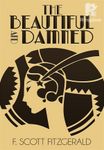
First published in 1922, F. Scott Fitzgerald"s second novel The Beautiful and Damned portrays the Eastern elite during the Jazz Age, exploring New York Café Society. The story is believed to be largely based on Fitzgerald"s stormy relationship with Zelda Fitzgerald. This is the tale of young couple Anthony and Gloria Patch living out their days to the hilt in New York City as they await the death of Anthony"s grandfather, Adam Patch from whom they expect to inherit his massive fortune. They drink and eat in the classiest restaurants and hotels, rent the most expensive apartments, travel out to the West in the spring time driving plush cars, wearing top-of-the-line clothing and just generally living it up high on the hog, as they wait. But as time goes on their lust for life and their similarities threaten to destroy their innocence and their relationship. A fierce parable about the illusory quality of dreams, the intractable nature of reality, and the ruin wrought by time, The Beautiful and Damned eerily anticipates the dissipation and decline that would come to the Fitzgeralds themselves before the decade had run its course.
-
14. The Beautiful and Damned
(1922) The victor belongs to the spoils.--ANTHONY PATCH This novel takes the reader through a poignant love story between Anthony, a self-absorbed heir to a great fortune, and the stunningly beautiful, but equally self-absorbed, Gloria. The two have little use for anything or anybody but themselves. Fitzgerald's beautiful prose and excellent development of the characters makes this an enjoyable read. What is even more fascinating about the vintage 1922 novel is its description of life in that time. Things we take for granted today are portrayed in a 1915-ish reality. For instance, Anthony and Gloria grow weary of the train ride to their summer house near Rye, NY. Anthony then comes-up with the a remarkable fix; they will purchase an automobile!--Submitted by Anonymous.
-
15. Recent Forum Posts on This Side of Paradise
(1920) This is Fitzgerald's first novel, previously titled The Romantic Egoist, published to immediate success. This book is as much about human nature, our understanding or lack of understanding of ourselves, and the ups and downs of modern society, as it is about setting, which is sometimes ill-percieved as the plot. I highly recommend reading this book because not only is it entertaining, but also useful towards our own reflection.--Submitted by Anonymous.
